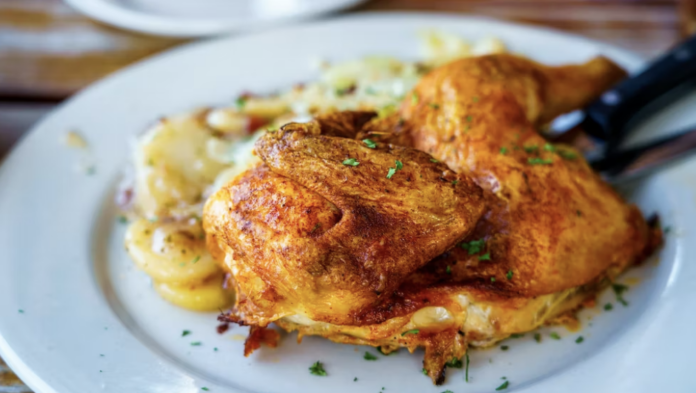Secret to BBQing a Juicier Chicken? Shark Tank’s Turbo Trusser revealed by Brian Halasinski and Kirk Hyust.
Want juicier chicken? Yes. More flavor? Yes. Get it all setup in seconds? Yes. Two guys who love good food decided to tackle the problem.
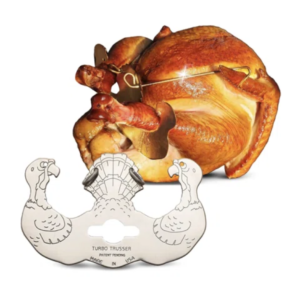
Luckily, a Chef and a Builder were on the team. And luckily the team has business smarts, creativity and can-do spirit. Lastly, the team got global attention by winning their way onto hit TV show Shark Tank where Kevin O’Leary got excited by the flavors, the team and their product.
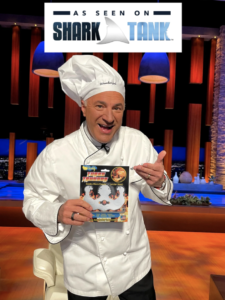
Today Turbo Trusser partners Brian Halasinski and Kirk Hyust stopped by for a conversation about delicious food, creating a great team and the secret to cooking.
The below conversation was edited for length and clarity. Find the full conversation on our YouTube channel.

Can you guys share a memory about how being in the backyard with your family and friends inspired you to create the Turbo Trusser?
Brian Halasinski: Kirk and I have been working together on inventions for the last eight years and oftentimes we’ll have an idea that’ll come up and we’ll text each other and we’ll write it down in a notebook and then we’ll come and visit it later.
It just happened that I was getting ready to make chicken for my family and I was going to do a rotisserie chicken and I was trying to figure out how to tie this bird up with traditional strings. So I got my iPad and I’m watching a video.
I have to pause the video. My hands are covered in chicken juice. And after it was all done, it wasn’t done well.
I texted Kirk because he’s a trained chef from the culinary Institute. There’s gotta be a better way. We started working on the Turbo Trusser from there.
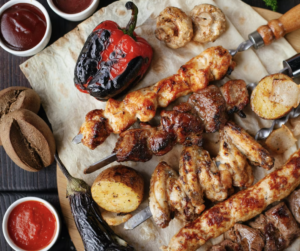
After your success on Shark Tank, Turbo Trusser has become a global hit. How have your backgrounds inspired where you are today?
Kirk Hyust: I’ve been a building contractor for 25 years. Before that I was a chef. I got burnt out [being a Chef] and then I started building things and that’s how Brian and I met. I renovated his house for him.
I was in the middle of inventing a wrench and Brian saw it [and said], ‘I want to start inventing too. You want to be inventing partners.’
We still haven’t quit our day jobs. We work seven days a week. Luckily working for us a lot of the time is cooking. Which is good.
You mentioned you are a trained chef. Tell us about your chef side.
Kirk Hyust: I went to the Culinary Institute of America in Hyde Park, New York. Classical French cuisine. We’re from Ohio, so I like meat and potatoes and hearty casseroles.
Do you have a favorite dish?
Kirk Hyust: Fettuccine Alfredo and Turbo Trusser chicken.
Brian, can we touch on your background and how how you ended up with TurboTruster?
Brian Halasinski: I have been in the pharmaceutical sales industry for the last 20 years. I have a fairly flexible schedule to where I’m on the road and can be on the phone and be multitasking quite a bit when I’m working.
I’ve had that entrepreneurial spirit in a way. Then when I met Kirk, he had invented this wrench and he was working on my house and he was there for it was a pretty decent sized project.
So over time we became friends. I became interested in the whole process of inventing.
And then with that, you could actually take your invention and license it to somebody, basically renting out your idea and collecting a royalty. Kirk and I always thought that would be great.
We did a couple of products and we licensed them. Didn’t end up working out […]. We learned a little bit about the failures. And then ultimately that day I texted Kirk and said, listen, we got to come up with a better way to trust a chicken or Turkey. And we looked out there and there was nothing available other than butcher’s twine, which has been the way it’s been done for a hundred years.
A huge majority of people cook chicken and turkeys the wrong way. That’s my assumption.
When we compare your final chicken to a poorly done chicken what’s the difference?
Kirk Hyust: Trusting actually is a technique that brings all the meat together. If you don’t trust a bird, you’re actually cooking five pieces of meat separately. You got two wings, you got two legs and thighs and a breast. What you do, when you truss a bird, you actually bring all the pieces together and it cooks as one piece of meat, so it’s cooked more evenly and it’s juicier.
If you don’t cook it, if you don’t tie it up, if you just throw it in the oven or on the grill, what happens is all the meat cooks separately. The breast is gonna be done before the legs. The wings probably are going to dry out and they’re going to be inedible. Because when you use the Turbo Trusser the wings are great.
It makes one ball of meat essentially and cooks it as one piece of meat instead of five.
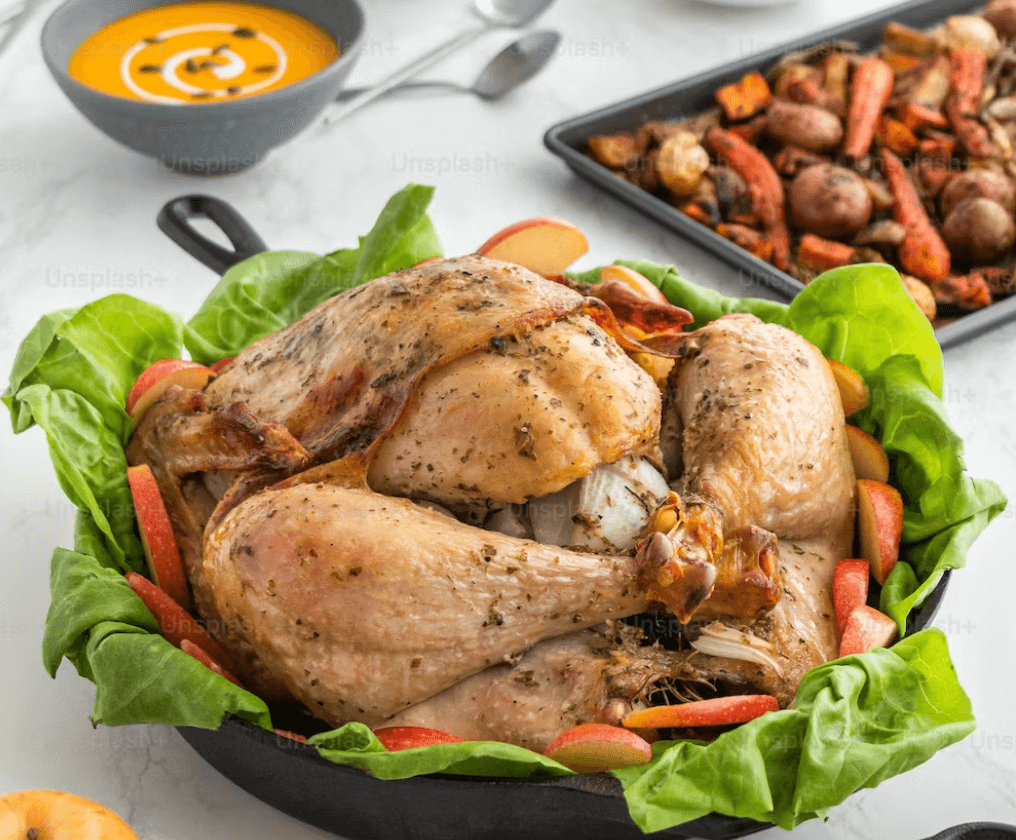
Is it the ego of the grill master? Or how do we help people realize they can have a better bird?
Kirk Hyust: That’s a really good question because we get that a lot. People have never even heard the term truss. To truss a bird.
Your bird’s gonna be a lot better, but it’s gonna take you about five minutes to do it when it takes 20 seconds to use our product. Especially a Thanksgiving Turkey because that will dry out a lot faster than a chicken.
Brian Halasinski: With the Turbo Trusser, the way it’s designed it’s going to hold the stuffing in place too. So the stuffing’s not going to dry out the way it closes the cavity.
If you’re going to do a rotisserie, you absolutely have to tie that bird up or your legs and wings are going to be just flopping around the whole time.
Can we talk a little bit about the process going from zero to where we are today?
Brian Halasinski: It was when we came up with the concept.
First, we started making prototypes. We made them out of cardboard. Then we made them out of wood. Kirk’s got all these tools so we could easily cut things. Then through trial and error with prototypes that we could make cheaply, we ended up with a very similar design to what we have today.
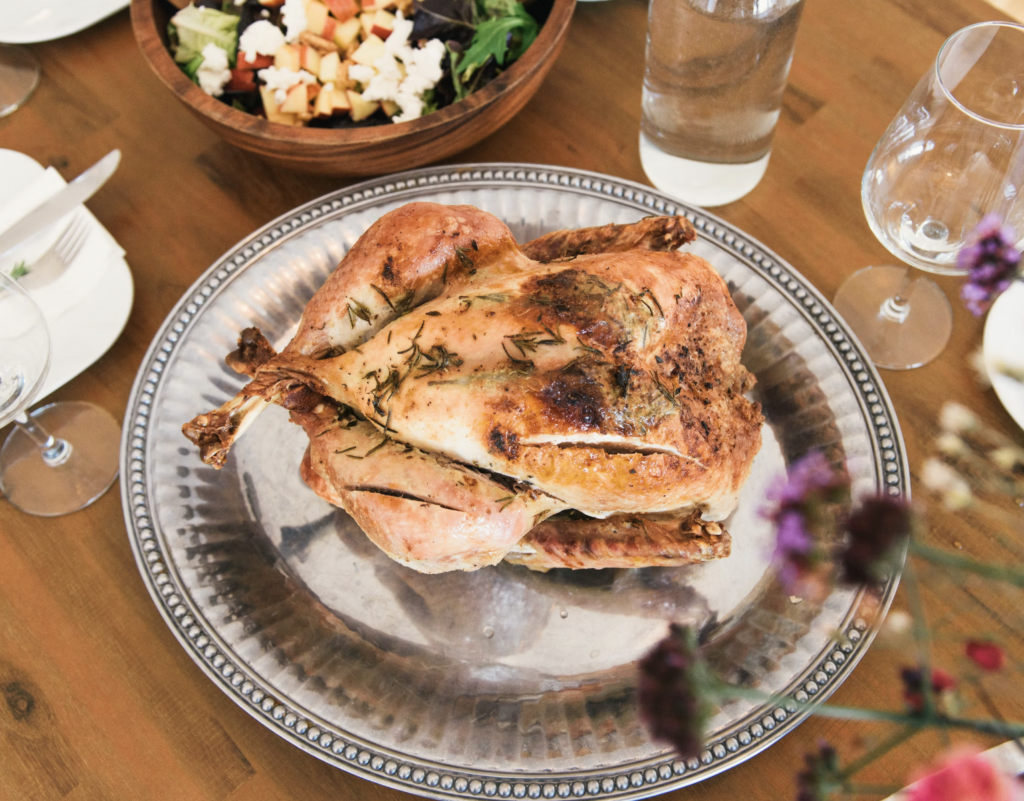
Then from there, we found a local fabricating shop that was able to laser cut out some samples for us so we could actually cook with them. We did all these things, refining the process and refining the product down to where we wanted to make it. Then we had to make a decision: make this here in the U.S. or go overseas.
Kirk and I made a decision based on our beliefs and our values that we wanted to make it here in the U.S. Being in Ohio, we were close to Cleveland, Ohio. This was the rust belt. There’s still a lot of manufacturing here.
So within one hour of our headquarters, we were able to source everything we needed to mass produce and launch this product to the world from Canton, Ohio.
Kirk Hyust: We had six prototypes by the time we got to our seventh one. That was the one that we stuck with. We just kept refining the prototypes until we landed on the seventh one, which is that what in the stores or online.
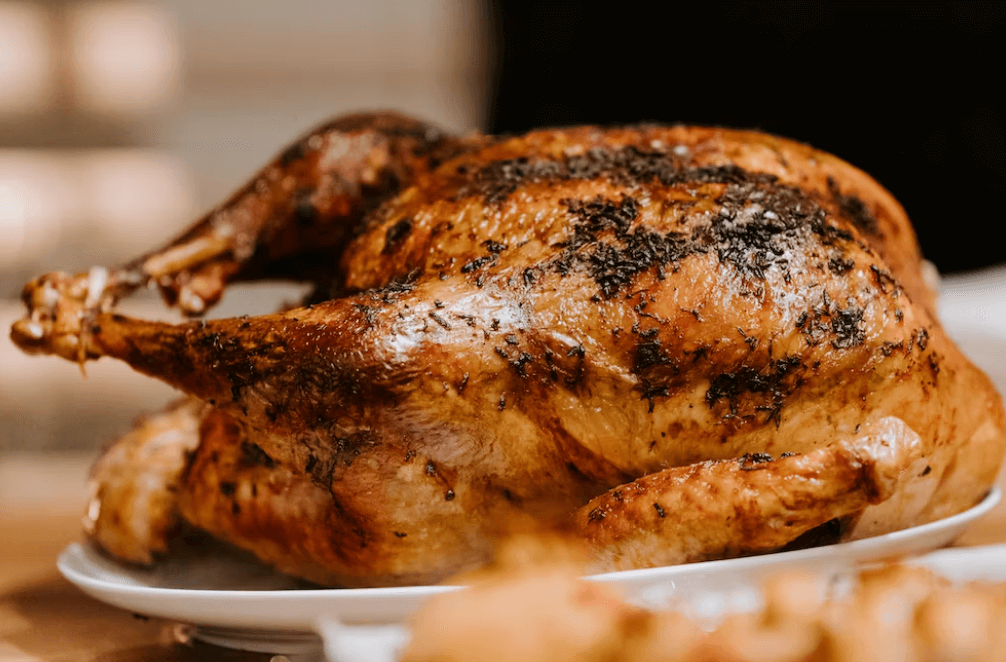
Can you tell us a little bit about from prototype one to seven? How did we get there?
Kirk Hyust: When you’re doing a prototype, obviously you have to solve a problem. When you build a product, it has to work correctly or you’re going to get bad reviews.
But we started out with a couple different designs. We bought a chicken and a turkey; and we put this contour gauge on the leg, so that made the dips that you see now where the legs go into. Then we were in my shop, cutting it out and it looked like [bird] wings so we ended up putting the heads on it because it already had wings that the legs sat into the cradle.
It’s a lot of detail.
Kirk Hyust: Yes, exactly. We just got our patent […] issued for the very first time. Even if it’s a piece of stamp metal and 2 wires. How intricate it really is.
Kirk, between your chef skills and your contractor skills. A perfect combination of bringing those two skill sets together.
Kirk Hyust: It is. We have sales and numbers and Brian’s also creative. […]The technical stuff, the websites, we develop everything together, but we have our strengths, he has a master’s degree in business. So he’s trained really well for that.
So it’s lie our strengths and weaknesses definitely fit together with each other.

Can we just talk through in the most simple, basic steps, how to use the Turbo Trusser?
Kirk Hyust: It’s really very simple. I usually buy a five pound bird. [With] smaller birds, it still works. It goes up to a 10 pound chicken.
Then you take the plastic off, pull the packet of giblets and everything out of the inside. Rinse it off. Pat it dry with a paper towel and if you have time, put it in the refrigerator and let the skin dry out. Put the Turbo Trusser on it, hook the legs in, hook the wings.
Use duck fat or some kind of a binder to put your spices on it. Salt and pepper, your favorite rub, something spicy, something sweet. Coat it with some kind of oil, or ghee or olive oil.
Put it in the oven at 375 for an hour and a half until it hits 165 degrees. That’s pretty much in a nutshell how easy it is.
Brian Halasinski: The Turbo Trusser is just three pieces. You got the main piece. Then you have two hooks. The hooks are going to go through the holes on the body of the chicken. You’re going to put the sharp end through the hole. It’s going to lock into place with the other end.
So it’s simply, put the two hooks into the Turbo Trusser body. You hook them onto the wings. The legs go into the cradle and in 20 seconds, you’re done.
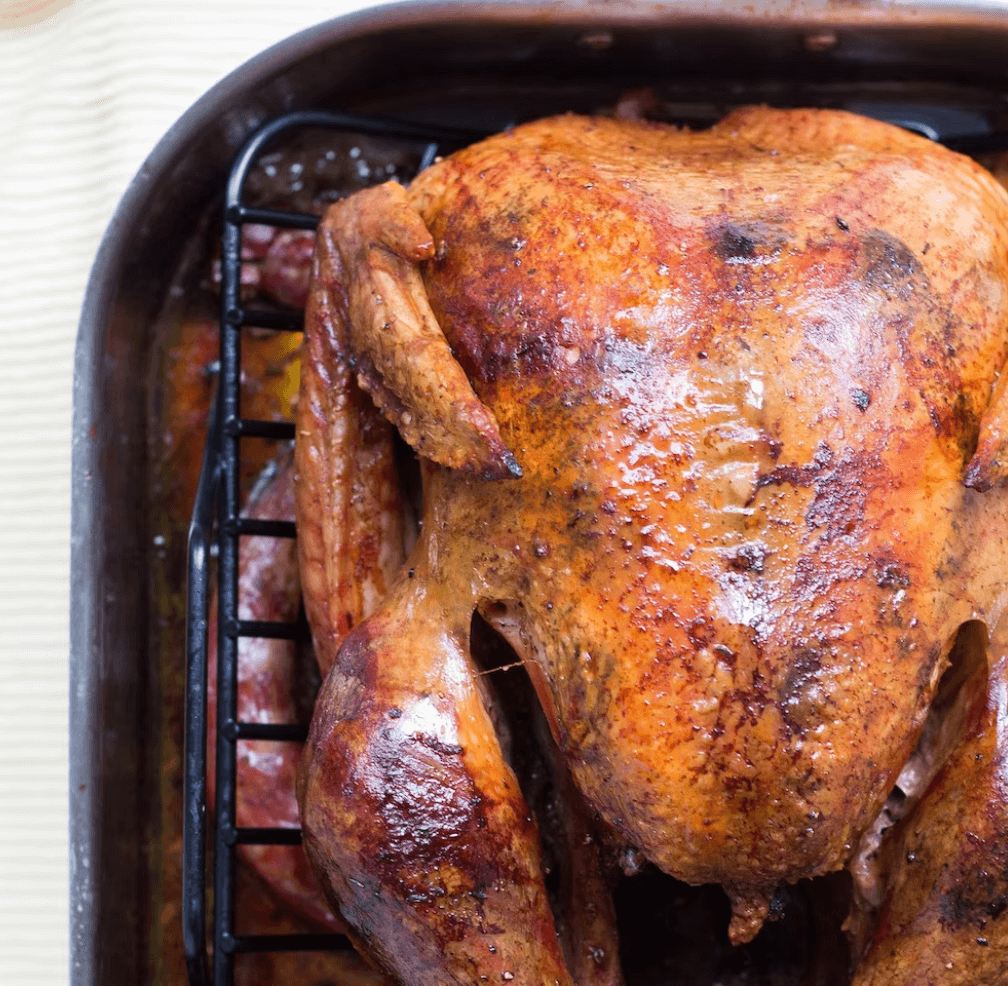
How do we get that strong-willed Backyard Grillmaster to give the Turbo Trusser a try?
Brian Halasinski: Just telling them to keep it simple and go back to what people have been doing for 100 years. And that’s using string to tie it up. Only we came up with a simpler solution. So it’s what everybody’s been people don’t do it because they’re intimidated, but now they don’t have to be. The turbo truss are so easy to use.
Anybody can use it. Even if you have dexterity problems, you’re never going to figure out how to, you’re not going to be able to tie up a bird if you have problems with your fingers, right? older people, maybe they have arthritis and it’s hard for them to tie a knot. Now with the turbo trusser, you can do that without fear and you can, it’s simple and effective.
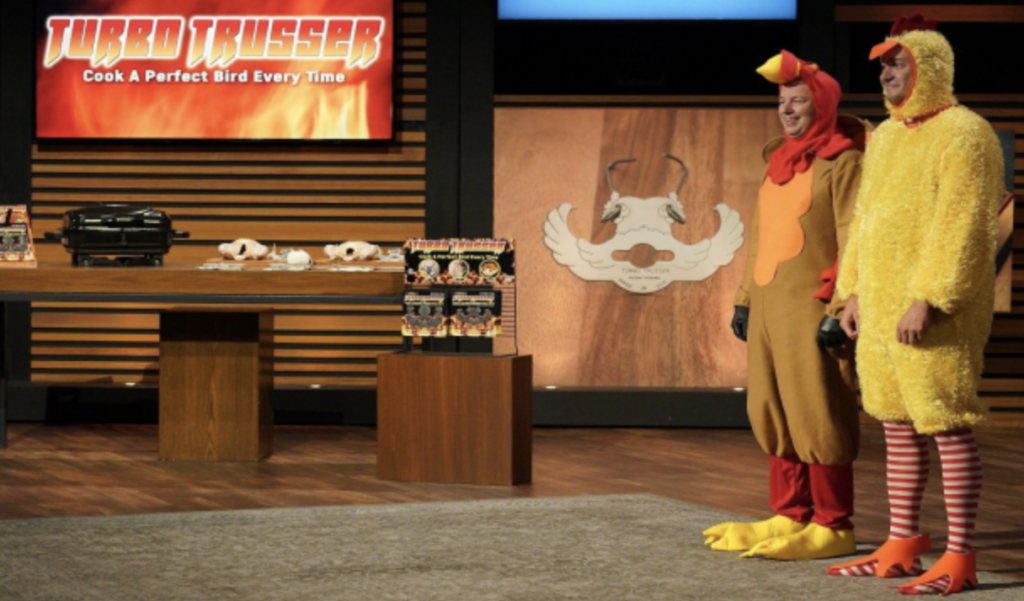
As we wrap up, tell me about the Shark Tank experience.
Kirk Hyust: It was crazy.
Brian Halasinski: I’ll give you a high level view. We launched our product on November 1st of 2021.
Right away we went online and we applied for Shark Tank. It was 100% online. Before COVID they would do open casting calls like Like American Idol.
About 50, 000 people apply. They narrow that down to about 125 people that tape [a TV segment], and maybe 100 or so will end up airing on television for the season that you’re in.
So we apply, we have no sales, we don’t hear a word from them for a couple months. So we launched the product. We did pretty well. We sold like $50,000 worth of Turbo Trussers in the first two months of being in business with nobody ever heard of us.
We went back and we re-applied again, we got some sales numbers. Eventually they called. I Six months after we initially applied, they called us.
You basically work down through the process every week. They’re giving you something new to turn in, to make a video.
Our first video, we came up with the idea to wear the chicken and turkey costumes. We said we wanted to stand out. We know that Shark Tank is television. If it’s not good TV, people aren’t going to watch it. They loved it.
We made it all the way down through. We went all the way out to California and taped [our episode]. We ended up getting a deal with Kevin O’Leary, which was incredible.
Kirk Hyust: Brian’s a salesman. I’m not used to that. So when I was on Shark Tank, I messed my lines up. I went blank for a couple seconds. I missed my cue to go over to my spot and I was really flustered, but I recovered, but man, that was the worst part.

Tell us the website, social media, where to find you, where to browse your products, where to learn more about you.
Brian Halasinski: The first thing for our product is TurboTrusser.com.
You can make your decision if you want to buy from our website, or you can go to Amazon Prime across the country.
You can find us on all the regular social media at Turbo Trusser on Facebook, Instagram, TikToK
You can find me, Brian Halasinski on LinkedIn, connect with us and be happy to chat or answer any questions with anybody.
Kirk Hyust: I’m on LinkedIn as well.
You can reach out if you have any questions. I write a lot of the PPAs (provisional patent applications) and stuff. So any kind of questions, how to cook a good bird we’re accessible. We want to help we want to help anybody out there that we can, because we’ve had a lot of people help us along the way.


